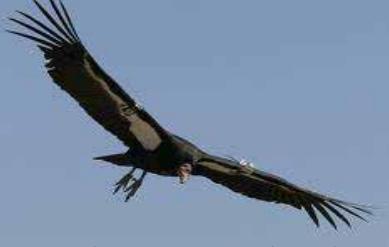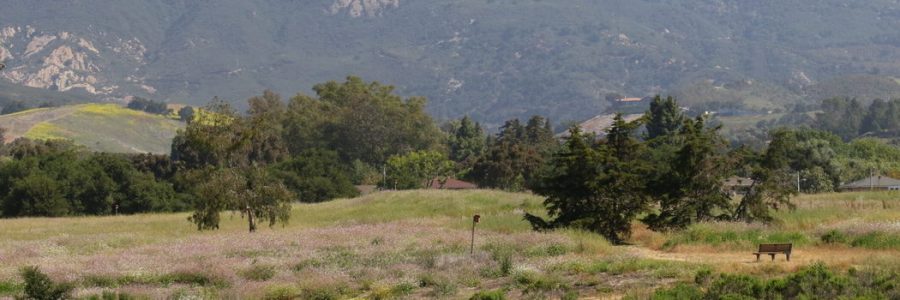Waking Up to the 1970s
By Isabelle T. Walker
As published in El Tecolote June-July 2013
Union Oil’s 1969 blowout on Platform A jolted our nascent chapter into high gear, just as it jolted the entire community into a state of active alarm. Santa Barbara Audubon members—particularly chapter board members and officers—who had been active before the spill became even more so. Monthly messages from chapter presidents in El Tecolote contained more calls to write, testify or boycott something or other in the interest of habitat or an ecological struggle.
Here is chapter President Tomi Sollen’s message of 1974, “Let’s all strive for conservation of our natural resources . . efforts to keep more oil drilling out of the channel, trail bikes from destroying our wilderness areas, clean water, air, open spaces and abatement of noise pollution.”
A handful of issues carried forward from the 1960s to the decade of Watergate, the Pentagon Papers, Gerald Ford and Jimmy Carter. The chapter’s long-cherished goal of converting the Bird Refuge into a home for wild, migrating birds was one of them. The project had been stymied by lack of money, conflicts with the adjacent Child’s Estate and a stubborn population of domestic ducks and geese. In 1972, Brad Schram and Lana Wood of The Natural History Museum rowed out and collected 150 goose eggs from the Refuge’s islands in an effort to keep the population down. In 1974, the City Parks Department finally agreed to embark on a master plan for the Refuge. Thirty-five thousand dollars was allocated and most of the elements the chapter wanted were incorporated, including an irrigation system and a paved parking lot.
Numerous and repeated hearings on oil drilling in the channel never failed to bring one or more SBAS members to the microphone. At one key Congressional hearing in 1973, Robert Kasson, SBAS Conservation Co-Chair, said, “We remember the well-meant statements and claims by employees of oil companies. They asked us to trust them and to have faith in their technological expertise. We got the big spill of 1969 and in addition day by day pollution so at this very minute our beaches are not fit to walk on.”
(In 1987, the County Supervisors approved an air-pollution mitigation plan that allowed Exxon to expand its offshore oil development in federal waters off our shores.)
US Gypsum’s 1970 proposal to construct an open-pit phosphate mine on the west slope of Pine Mountain––a mile-and-a-half from critical Condor habitat––was a concern all the way through 1976 and had chapter members repeatedly testifying and writing letters in opposition. Fortunately, the mine was never built. The chapter also protested Exxon’s Las Flores Canyon onshore oil processing plant––which was ultimately built––and a 320-site camp development at Zaca Lake––ultimately denied.
Between 1970 and 1977, chapter membership doubled from 500 to 1,171. In 1972, Supervisor Jim Slater appointed one of SBAS’s founders, Joy Parkinson, to the County Parks Commission. From there she advocated and facilitated, along with chapter Vice President and County Planning Commissioner Cherie Bratt, the county’s 1975 purchase of Lake Los Carneros for $1.25 million. It was on the brink of being sold to Boise Cascade for houses and a golf course. Parkinson and Bratt travelled to Sacramento to meet with William Penn Mott, Jr., director of the State Parks Department. They convinced him to come and see the lake and after a bike ride around its pastoral edge, he agreed it was worth saving and found the money to do it.
Parkinson served a total of five terms as chapter president—three of them in the 1970s.
The backdrop to all this activism included all the varied and usual activities that accompany a growing community of bird lovers and watchers––field trips, rare bird alerts, Christmas Bird Counts and a monthly newsletter that seemed perennially short handed. In 1970, 12 members of the chapter met Ron Hein of California Fish and Game in the Mugu marsh to drag it with ropes in search of endangered Clapper Rails. They found two, thus establishing the marsh as a habitat of an imperiled species.
Our Christmas Bird Counts numbered in the high 190s and low 200s most of the decade. But in 1977, a 214 species total had us number one in the nation. Among the 214 were Whistling Swans, Roadrunners and a Western Tanager.
The death of Dick Smith at age 56 in 1977 was a major blow not only to the chapter but to everyone who cared about the back country. Smith was a journalist––he wrote for the News-Press—an artist, an environmental steward, and all around conservationist in the classic sense of the word. He played a major role in educating the community about conservation issues, through his columns, art and stamina.
“He had the most interesting ability to work with nature and technology,” said Parkinson. “He would make life difficult for himself if he could,” said our 1971 Chapter President Jim Mills about Smith’s fondness for roughing it outdoors, where he spent oodles of time with his horse and dog. The chapter established a Dick Smith Scholarship Fund to the Audubon Camp of the West, and later joined the effort to have a section of the San Rafael Wilderness renamed The Dick Smith Wilderness, an effort that succeeded.
As the decade came to a close, the distressing predicament of the California Condor came into focus. Brad Schram, SBAS president from
June 1977 through early 1978 said, “When it appeared that the Condors were beyond being in trouble but on their way out, I proposed, naively, that SBAS take a vote in favor of captive breeding program. And the vote passed.” However, at that point, many chapter members were still opposed to the idea, and willing to say so.
Schram said the Condor’s situation wasn’t an urgent issue until the late 70s and 80s, when it became clear the population was actually plummeting.
“Captive breeding didn’t hit us straight until the late 70s, when we realized how critical [the situation was],” said Schram. “There was a realization that the counts had been too optimistic, that Condors were traveling farther than they thought and there had been more double counting”
As history has shown, 1979 was only the start of Condor’s politically fraught and drama-packed journey back to existence––a journey that is still in progress.



